inverted yield curve
description: an interest rate environment where long-term debt instruments have lower yield than short-term debt instruments, often seen as an indicator of an impending recession.
24 results
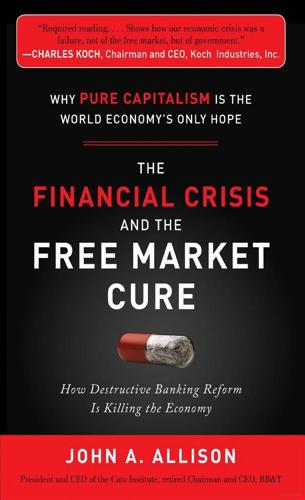
The Financial Crisis and the Free Market Cure: Why Pure Capitalism Is the World Economy's Only Hope
by
John A. Allison
Published 20 Sep 2012
The inflation rate using the “old” CPI is significantly higher than that using Greenspan’s calculation.13 Could the Fed be making improper decisions based on miscalculating the CPI? At best, the calculation of the CPI is more art than science. After he became chairman of the Federal Reserve in early 2006, Bernanke rapidly raised interest rates and created an inverted yield curve. An inverted yield curve is one in which short-term rates are higher than long-term rates, and even Fed researchers acknowledge that an inverted yield curve tends to trigger recessions.14 Because bankers had been misled by Greenspan’s often-spoken concern about deflation, many of them had extended their bond portfolios, as this was one of the few areas where they could make long-term profits based on Greenspan’s deflation scenario.
…
What is sad, however, is that even though at some level Bernanke knew that the Fed had made major mistakes, this is not what he discussed publicly. He said repeatedly that the inverted yield curve would not cause a recession, but would simply slow the rate of inflation. While he mentioned the housing market occasionally, mostly by claiming that there was no bubble,15 his focus was primarily on commodity prices. He held the inverted yield curve for more than a year (from July 2006 to January 2008), one of the longest yield-curve inversions ever. The subsequent Great Recession, which lasted through June 2009 (and, practically speaking, continues in December 2011), began in December 2007.
…
As mentioned, history reveals that there is a very high correlation between inverted yield curves and recessions. Bernanke denied this correlation and was adamant that things were different this time because of globalization. He was right in a certain sense. Things were different because of globalization, but in exactly the opposite way from what he expected. The Chinese were making things worse by constantly buying long-term U.S. government debt and holding down long-term interest rates, helping to provide incentives to the housing market. If you are managing a financial intermediary (especially a commercial bank), an inverted yield curve is a disaster.

The Investopedia Guide to Wall Speak: The Terms You Need to Know to Talk Like Cramer, Think Like Soros, and Buy Like Buffett
by
Jack (edited By) Guinan
Published 27 Jul 2009
Related Terms: • Accrual Accounting • Cost of Goods Sold—COGS • Inventory • Asset Turnover • Gross Profit Margin Inverted Yield Curve Yield What Does Inverted Yield Curve Mean? An interest rate environment in which long-term debt instruments have lower yields than do short-term debt instruments of the same credit quality. This type of yield curve is the rarest of the three main curve types and is considered a predictor of economic recession. Maturity Copyright © 2006 Investopedia.com Partial inversion occurs when only some of the short-term Treasuries (5 or 10 years) have higher yields than the 30-year Treasuries; an inverted yield curve sometimes is referred to as a negative yield curve.
…
There are three main types of yield curve shapes: (1) normal, (2) inverted, and (3) flat (or humped). (1) A normal yield curve (pictured here) is one in which longer-maturity bonds have a higher yield than do shorter-term bonds because of the risks associated with time. (2) An inverted yield curve is one in which the shorter-term yields The Investopedia Guide to Wall Speak 325 are higher than the longer-term yields; this can be a sign of an upcoming recession. (3) A flat (or humped) yield curve is one in which the shorter-term and longer-term yields are very close to each other; this is also a predictor of an economic transition. The slope of the yield curve also is considered important: the greater the slope, the greater the gap between short-term and long-term rates. Related Terms: • Corporate Bond • Inverted Yield Curve • U.S. Treasury • Interest Rate • Risk-Free Rate of Return Yield to Maturity (YTM) What Does Yield to Maturity Mean?
…
Maturity Copyright © 2006 Investopedia.com Partial inversion occurs when only some of the short-term Treasuries (5 or 10 years) have higher yields than the 30-year Treasuries; an inverted yield curve sometimes is referred to as a negative yield curve. Investopedia explains Inverted Yield Curve Historically, inversions of the yield curve have preceded many U.S. recessions. Because of this historical correlation, the yield curve often is seen as an accurate indicator of the turning points of the business cycle. An inverse yield curve predicts lower interest rates in the future as longer-term bonds are being demanded, sending the yields down. The Investopedia Guide to Wall Speak 147 Related Terms: • Interest Rate • Treasury Bond—T-Bond • Yield Curve • Treasury Bill—T-Bill • Treasury Note Investment Bank (IB) What Does Investment Bank (IB) Mean?
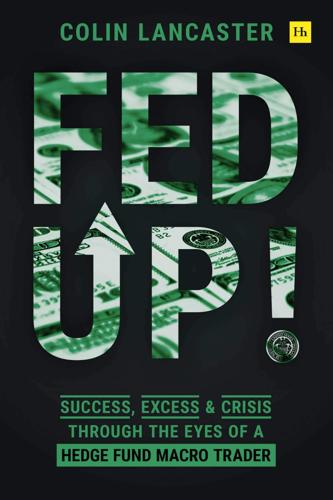
Fed Up!: Success, Excess and Crisis Through the Eyes of a Hedge Fund Macro Trader
by
Colin Lancaster
Published 3 May 2021
We are long risk in about a dozen different ways, but I’m about as negative as I have ever been on the world. Brexit, slow growth, trade wars, muddled-up foreign policy, a lack of investment, impeachment, and central bank balance sheets are back near all-time highs. And that doesn’t even factor in the more foreboding signs, such as the inverted yield curves that tell us that we are headed toward something darker. JFK airport is a dump. The highway into the city looks like a war zone, and the car I’m in feels as if it has no shocks or suspension. Shit. I can barely hold my phone to my ear there are so many bumps, and my AirPods are in my luggage.
…
The banking system lies at the center of the economy, and an upward sloping curve helps them fulfill their role as lenders: they pay you to borrow your deposits and then lend at higher rates further out the curve. A flattening yield curve indicates that the yield spread between long-term and short-term bonds is decreasing. Flat (or even worse, inverted) yield curves mean the economy is slowing and the central banks need to cut rates. They predict the next recession. This is the market voting with its money. The markets drive the shape of the yield curve, saying things are bad, they need to be fixed. Today, the front end of the Treasury curve is flat as a pancake; it has never been flatter.
…
Investors have already bid stocks to all-time highs. He’ll be forced to create massive amounts of digital money. He’ll need to roll the QE dice and hope it works, hope it keeps the greatest financial bubble from popping. Don’t worry. He has it under control. Don’t worry about the cracks that are appearing. Don’t worry about the inverted yield curves or that the CLOs16 are including more garbage loans. Don’t worry that the repo markets are breaking or that there were sixty mini-Madoffs running around. Don’t worry that the unicorns are tanking, that global debt is at $250 trillion, that wealth inequality is accelerating. Trust him. It will be okay.”
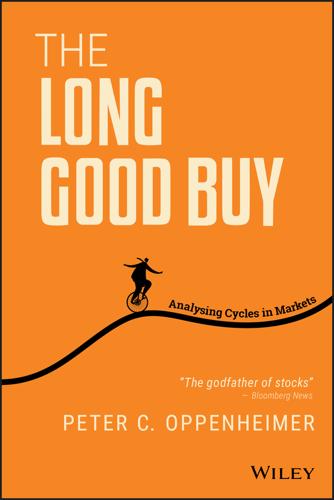
The Long Good Buy: Analysing Cycles in Markets
by
Peter Oppenheimer
Published 3 May 2020
This is particularly true – as in the recent cycle – when the starting level of interest rates is very low as rising bond yields, alongside growth expectations, may reflect more confidence that policy is working and that recessionary risks are fading. By the same token, a steepening yield curve (long-term bond yields rising above the levels of short-term interest rates) would generally imply a supportive central bank monetary policy, and an inverted yield curve, when bond yields are below short-term, policy-driven interest rates, would tend to reflect a restrictive monetary stance. Note 1 The output gap is usually described as the amount by which the actual output of an economy falls short of its potential output. Chapter 4 Asset Returns through the Cycle Chapter 3 looks at how the equity market tends to deliver different returns across the phases of the cycle.
…
By extension, the lack of inflation and inflation expectations in the post-financial-crisis cycle is one of the factors that has supported a much longer economic cycle and less volatility. In the absence of inflation pressures, monetary policy may remain much looser and reduce the risks of recession and, by association, bear markets. The yield curve. Related to the point about inflation, tighter monetary policy often leads to a flattening, or even inverted, yield curve. Because many, although by no means all, bear markets are preceded by periods of monetary policy tightening, we find that flat yield curves, prior to inversion, are also followed by low returns or bear markets. In recent years the impact of QE and falling inflation expectations (term premia), may have weakened the reliability of this signal.4 As a consequence, we use the 3-month to 10-year measure, with a focus on the short end of the yield curve (0–6 quarter).
…
The 0–6 quarter forward spread more clearly captures the market's near-term outlook via its funds rate expectations than back-end measures, which are more distorted by term premia. Consistent with Fed research, we find that the near-term 0–6 quarter forward spread has also been a somewhat more significant predictor of recession risk than, for instance, the 3m10y measure. Once again, by combining the signal with valuation, a combination of flat or inverted yield curves together with high valuation can be a useful bear market indicator Growth momentum at a high. Typically, periods of strong and accelerating economic growth (although a good thing for equity investors in general) tend to be followed by lower equity returns when the pace of growth starts to moderate.

The Simple Path to Wealth: Your Road Map to Financial Independence and a Rich, Free Life
by
J L Collins
Published 17 Jun 2016
The chart on the left is fairly typical. The greater the difference between short, mid and long-term rates, the steeper the curve. This difference varies and sometimes things get so wacky short-term rates become higher than long-term rates. The chart for this event produces the wonderfully named Inverted Yield Curve and it sets the hearts of bond analysts all aflutter. You can see what that looks like in the illustration on the right. Stage 7 Inflation is the biggest risk to your bonds. As we’ve discussed, inflation occurs when the cost of goods is rising. When you lend your money by buying bonds, during periods of inflation when you get it back it will buy less stuff.
…
Your money is worth less. A big factor in determining the interest rate paid on a bond is the anticipated inflation rate. Since some inflation is almost always present in a healthy economy, long-term bonds are sure to be affected. That’s a key reason they typically pay more interest. So, when we get an Inverted Yield Curve and short-term rates are higher than long-term rates, investors are anticipating low inflation or even deflation. Stage 8 Here are a few other risks: Credit downgrades. Remember those rating agencies we discussed above? Maybe you bought a bond from a company rated AAA. This is the risk that sometime after you buy the company gets in trouble and those agencies downgrade its rating.

Analysis of Financial Time Series
by
Ruey S. Tsay
Published 14 Oct 2001
Using the modern econometric terminology, if one assumes that the two interest rate series are unit-root nonstationary, then the behavior of the residuals of Eq. (2.40) indicates that the two interest rates are not co-integrated; see Chapter 8 for discussion of co-integration. In other words, the data fail to support the hypothesis that there exists a long-term equilibrium between the two interest rates. In some sense, this is not surprising because the pattern of “inverted yield curve” did occur during the data span. By inverted yield curve, we mean the situation under which interest rates are inversely related to their time to maturities. 1970 1980 year 1990 2000 ACF 0.0 0.2 0.4 0.6 0.8 1.0 Series : res 0 5 10 15 Lag 20 25 30 Figure 2.14. Residual series of linear regression (2.40) for two U.S. weekly interest rates: (a) time plot, and (b) sample ACF. 69 REGRESSION MODELS WITH TIME SERIES ERRORS -2 per. chg. -1 0 1 2 (a) Change in 1-year rate 1970 1980 year 1990 2000 1990 2000 -2 per. chg. -1 0 1 2 (b) Change in 3-year rate 1970 1980 year Figure 2.15.
…
• Suppose that we are interested in forecasting the direction of the 1-month ahead stock movement. Fit a 6-5-1 feed-forward neural network to the return series using a Heaviside function for the output node. Compute the 1-step ahead forecasts in the forecasting subsample and compare them with the actual movements. 5. Because of the existence of inverted yield curves in the term structure of interest rates, the spread of interest rates should be nonlinear. To verify this, consider the weekly U.S. interest rates of (a) Treasury 1-year constant maturity rate, and (b) Treasury 3-year constant maturity rate. As in Chapter 2, denote the two interest rates by r1t and r3t , respectively, and the data span is from January 5, 1962 to September 10, 1999.
…
ISBN: 0-471-41544-8 Index ACD model, 197 Exponential, 197 generalized Gamma, 199 threshold, 206 Weibull, 197 Activation function, see Neural network, 147 Airline model, 63 Akaike information criterion (AIC), 37, 315 Arbitrage, 332 ARCH model, 82 estimation, 88 normal, 88 t-distribution, 89 Arranged autoregression, 158 Autocorrelation function (ACF), 24 Autoregressive integrated moving-average (ARIMA) model, 59 Autoregressive model, 29 estimation, 38 forecasting, 39 order, 36 stationarity, 35 Autoregressive moving-average (ARMA) model, 48 forecasting, 53 Back propagation, neural network, 149 Back-shift operator, 33 Bartlett’s formula, 24 Bid-ask bounce, 179 Bid-ask spread, 179 Bilinear model, 128 Black–Scholes, differential equation, 234 Black–Scholes formula European call option, 79, 235 European put option, 236 Brownian motion, 224 geometric, 228 standard, 223 Business cycle, 33 Characteristic equation, 35 Characteristic root, 33, 35 CHARMA model, 107 Cholesky decomposition, 309, 351, 359 Co-integration, 68, 328 Common factor, 383 Companion matrix, 314 Compounding, 3 Conditional distribution, 7 Conditional forecast, 40 Conditional likelihood method, 46 Conjugate prior, see Distribution, 400 Correlation coefficient, 23 constant, 364 time-varying, 370 Cost-of-carry model, 332 Covariance matrix, 300 Cross-correlation matrix, 300, 301 Cross validation, 141 Data 3M stock return, 17, 51, 58, 134 Cisco stock return, 231, 377, 385 Citi-Group stock return, 17 445 446 Data (cont.) equal-weighted index, 17, 45, 46, 73, 129, 160 GE stock return, 434 Hewlett-Packard stock return, 338 Hong Kong market index, 365 IBM stock return, 17, 25, 104, 111, 115, 131, 149, 160, 230, 261, 264, 267, 268, 277, 280, 288, 303, 338, 368, 383, 426 IBM transactions, 182, 184, 188, 192, 203, 210 Intel stock return, 17, 81, 90, 268, 338, 377, 385 Japan market index, 365 Johnson and Johnson’s earning, 61 Mark/Dollar exchange rate, 83 Merrill Lynch stock return, 338 Microsoft stock return, 17 Morgan Stanley Dean Witter stock return, 338 SP 500 excess return, 95, 108 SP 500 index futures, 332, 334 SP 500 index return, 111, 113, 117, 303, 368, 377, 383, 422, 426 SP 500 spot price, 334 U.S. government bond, 19, 305, 347 U.S. interest rate, 19, 66, 408, 416 U.S. real GNP, 33, 136 U.S. unemployment rate, 164 value-weighted index, 17, 25, 37, 73, 103, 160 Data augmentation, 396 Decomposition model, 190 Descriptive statistics, 14 Dickey-Fuller test, 61 Differencing, 60 seasonal, 62 Distribution beta, 402 double exponential, 245 Frechet family, 272 Gamma, 213, 401 generalized error, 103 generalized extreme value, 271 generalized Gamma, 215 generalized Pareto, 291 INDEX inverted chi-squared, 403 multivariate normal, 353, 401 negative binomial, 402 Poisson, 402 posterior, 400 prior, 400 conjugate, 400 Weibull, 214 Diurnal pattern, 181 Donsker’s theorem, 224 Duration between trades, 182 model, 194 Durbin-Watson statistic, 72 EGARCH model, 102 forecasting, 105 Eigenvalue, 350 Eigenvector, 350 EM algorithm, 396 Error-correction model, 331 Estimation, extreme value parameter, 273 Exact likelihood method, 46 Exceedance, 284 Exceeding times, 284 Excess return, 5 Extended autocorrelation function, 51 Extreme value theory, 270 Factor analysis, 342 Factor model, estimation, 343 Factor rotation, varimax, 345 Forecast horizon, 39 origin, 39 Forecasting, MCMC method, 438 Fractional differencing, 72 GARCH model, 93 Cholesky decomposition, 374 multivariate, 363 diagonal, 367 time-varying correlation, 372 GARCH-M model, 101, 431 Geometric ergodicity, 130 Gibbs sampling, 397 Griddy Gibbs, 405 447 INDEX Hazard function, 216 Hh function, 250 Hill estimator, 275 Hyper-parameter, 406 Identifiability, 322 IGARCH model, 100, 259 Implied volatility, 80 Impulse response function, 55 Inverted yield curve, 68 Invertibility, 331 Invertible ARMA model, 55 Ito’s lemma, 228 multivariate, 242 Ito’s process, 226 Joint distribution function, 7 Jump diffusion, 244 Kernel, 139 bandwidth, 140 Epanechnikov, 140 Gaussian, 140 Kernel regression, 139 Kurtosis, 8 excess, 9 Lag operator, 33 Lead-lag relationship, 301 Likelihood function, 14 Linear time series, 27 Liquidity, 179 Ljung–Box statistic, 25, 87 multivariate, 308 Local linear regression, 143 Log return, 4 Logit model, 209 Long-memory stochastic volatility, 111 time series, 72 Long position, 5 Marginal distribution, 7 Markov process, 395 Markov property, 29 Markov switching model, 135, 429 Martingale difference, 93 Maximum likelihood estimate, exact, 320 MCMC method, 146 Mean equation, 82 Mean reversion, 41, 56 Metropolis algorithm, 404 Metropolis–Hasting algorithm, 405 Missing value, 410 Model checking, 39 Moment, of a random variable, 8 Moving-average model, 42 Nadaraya–Watson estimator, 139 Neural network, 146 activation function, 147 feed-forward, 146 skip layer, 148 Neuron, see neural network, 146 Node, see neural network, 146 Nonlinearity test, 152 BDS, 154 bispectral, 153 F-test, 157 Kennan, 156 RESET, 155 Tar-F, 159 Nonstationarity, unit-root, 56 Nonsynchronous trading, 176 Nuisance parameter, 158 Options American, 222 at-the-money, 222 European call, 79 in-the-money, 222 out-of-the-money, 222 stock, 222 strike price, 79, 222 Order statistics, 267 Ordered probit model, 187 Orthogonal factor model, 342 Outlier additive, 410 detection, 413 Parametric bootstrap, 161 Partial autoregressive function (PACF), 36 PCD model, 207 π -weight, 55 Pickands estimator, 275 448 Poisson process, 244 inhomogeneous, 290 intensity function, 286 Portmanteau test, 25.

The Simple Path to Wealth (Revised & Expanded 2025 Edition): Your Road Map to Financial Independence and a Rich, Free Life
by
JL Collins
The chart on the left is fairly typical. The greater the difference between short-, mid-, and long-term rates, the steeper the curve. This difference varies, and sometimes things get so wacky that short-term rates become higher than long-term rates. The chart for this event produces the wonderfully named inverted yield curve, and it sets the hearts of bond analysts all aflutter. You can see what that looks like in the chart on the right. Stage 7 Inflation is the biggest risk to your bonds. As we’ve discussed, inflation occurs when the cost of goods is rising. When you lend your money by buying bonds, during periods of inflation, when you get it back, it will buy less stuff.
…
Your money is worth less. A big factor in determining the interest rate paid on a bond is the anticipated inflation rate. Since some inflation is almost always present in a healthy economy, long-term bonds are sure to be affected. That’s a key reason they typically pay more interest. So when we get an inverted yield curve and short-term rates are higher than long-term rates, investors are anticipating low inflation or even deflation. Stage 8 Here are a few other risks: Credit downgrades: Remember those rating agencies we discussed earlier? Maybe you bought a bond from a company rated AAA. This is the risk that sometime after you buy, the company gets in trouble and those agencies downgrade its rating.

The Lords of Easy Money: How the Federal Reserve Broke the American Economy
by
Christopher Leonard
Published 11 Jan 2022
If I am a super-sketchy borrower, then I might need to offer someone a 19 percent rate to convince them to lend me money. If I am the U.S. government, I might only have to offer someone 1.1 percent to persuade them to lend me money. INVERTED YIELD CURVE: A condition in which debt markets enter the rare state when interest rates (or yields, as they call them) paid for long-term debt become lower than interest rates paid for short-term debt. Most people interpret an inverted yield curve as a signal that a recession is about to happen. JUNK BOND DEBT: A form of corporate bond that is so risky it is considered “junk.” Junk debt carries high interest rates to compensate for the high risk of making the loan.
…
By March, shares of stock in banks were falling over worries about the financial system, and the specter of a global recession was becoming more pronounced. The markets sent out a particularly stark warning that month when interest rates on short-term bonds became higher than those on long-term bonds. This is something called an “inverted yield curve” that signals a coming economic downturn. In July, the European Central Bank announced it would cut interest rates, largely because inflation remained alarmingly low. President Trump tweeted his fury about this development. He believed that the Fed should be leading the way on rate cuts and stimulus, not the ECB.
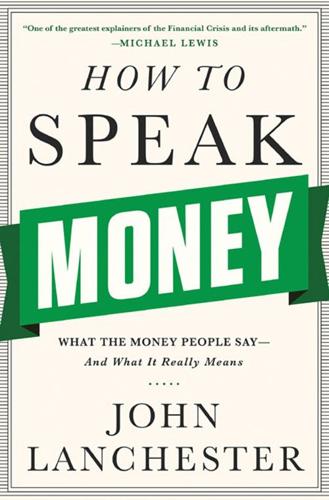
How to Speak Money: What the Money People Say--And What It Really Means
by
John Lanchester
Published 5 Oct 2014
Now that I know more about it, I think everybody else should too. Just as C. P. Snow said, in the late 1950s, that everyone should know the second law of thermodynamics,* everyone should know about interest rates, and why they matter, and also what monetarism is, and what GDP is, and what an inverted yield curve is, and why it’s scary. From that starting point, of language, we begin to have the tools to make up an economic picture, or pictures. That’s what I want this book to do: to give the reader tools, and my hope is that after reading it you’ll be able to listen to the economic news, or read the money pages, or the Wall Street Journal, and know what’s being talked about and, just as importantly, have a sense of whether you agree or not.
…
They pile into long-term debt, taking the opportunity to get these good rates while they’re still available. The price of those long-term debts goes up. Because price and yield are inversely correlated, the rising price makes the yield on those debts go down: that can mean that the longer-term debt ends up with a lower yield than short-term debt. This is known as an inverted yield curve, and it is a sure sign that the market thinks there is severe trouble just ahead. yuan and renminbi Observers of China refer to both the renminbi and the yuan in talking about the country’s currency. They’re the same thing: renminbi means “the people’s currency,” and it was the name given the new currency at the foundation of the People’s Republic of China in 1949.

The Corona Crash: How the Pandemic Will Change Capitalism
by
Grace Blakeley
Published 14 Oct 2020
Many economists were predicting that a recession would hit the US, the UK and the Eurozone by 2022.11 The yield curve, which shows the returns on US Treasuries of different maturities, had inverted for the first time since 2007 – meaning that short-term government bonds had higher yields than long-term bonds.12 An inverted yield curve has augured every major recession for the last half century. In the end, the recession came earlier – and hit unimaginably harder – than expected. All over the world, capitalists were already looking to nation-states to save them from the overlapping crises of secular stagnation, populism and climate breakdown.
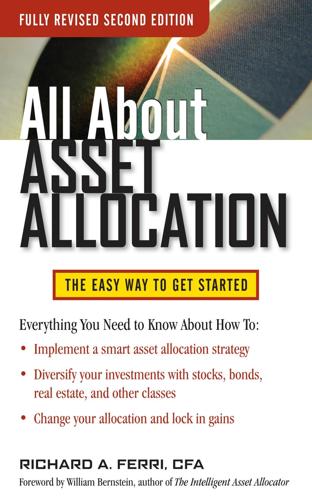
All About Asset Allocation, Second Edition
by
Richard Ferri
Published 11 Jul 2010
If T-bills have a higher yield than Treasury notes, this is known as an “inverted” yield curve. There is a school of thought that believes that when the curve is inverted, the economy is slowing and the stock market will likely go down. There appears to be some support for this theory, although CHAPTER 8 152 FIGURE 8-3 Treasury Term Spread, 1-Year T-Bills, and 10-Year Treasury Notes 4.0 Normal yield curve (long-term rates higher than short-term rates) 3.0 Yield difference 2.0 1.0 0.0 Feb. 89 ⫺1.0 Apr. 00 Jan. 06 ⫺2.0 ⫺3.0 Dec-10 Dec-05 Dec-00 Dec-95 Dec-90 Dec-85 Dec-75 Dec-70 Dec-65 Dec-60 Dec-55 ⫺4.0 Dec-80 Inverted yield curve (short-term rates higher than long-term rates) the timing is sketchy at best.
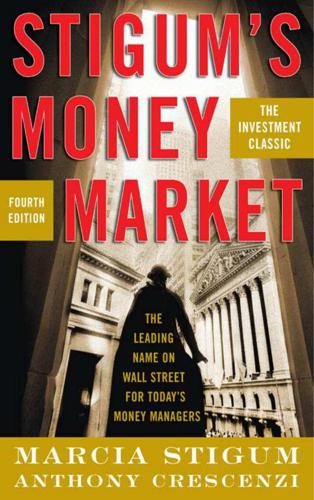
Stigum's Money Market, 4E
by
Marcia Stigum
and
Anthony Crescenzi
Published 9 Feb 2007
When the Fed lowers short-term interest rates, its monetary policy is considered friendly, and this is usually good news for bonds, stocks, and the economy because it lowers the cost of borrowing. A steep yield curve therefore generally bodes good times for investors over several quarters. By contrast, a “negatively sloped,” or inverted, yield curve usually is seen as an indication that short-term interest rates are relatively high and are expected to remain high, with the Fed engaged in a strategy to slow the economy by raising short-term interest rates. Figure 14.8 shows an inverted yield curve. In such an environment, short-term interest rates are higher than long-term interest rates because of interest rate hikes by the Fed. This, of course, generally portends a gloomier set of conditions for bonds, stocks, and the economy because it raises the cost of borrowing.
…
There are times, however, when the yield curve inverts, that is, yields on short-term securities rise above those on long-term securities. This, for example, was the case during much of the period 1979 to 1981, in early 1989, and again in early 2000—all periods that preceded economic recessions. In 2006 the yield curve had inverted again, but recession was not on the horizon. The reason for an inverted yield curve is that market participants anticipate, correctly or incorrectly, that interest rates will fall. As a result, borrowers choose to borrow short term while investors seek out long-term securities; the result is that supply and demand force short-term rates above long-term rates. 30-Year Bills, Alias STRIPS In the 1980s the Treasury permitted the creation, out of standard T-bonds, of what amount to T-bills with distant maturities.
…
People, particularly suppliers of funds, would begin to question why we were getting out of line with ‘safe practices’ [roughly the average of what other banks are doing], and our ability to continue to buy money might be impaired. That is something we could not allow to happen.” The upshot of all this concern is that bankers have the option of funding loan increases largely through the purchase of funds having a maturity of up to 30 days or longer. In 2006, the inverted yield curve made it difficult for banks to profit on new loans via funding in the money markets. Hence, many banks were selling lower-yielding assets in their securities holdings in order to fund higher-yielding loans. In cases where this option was less viable, banks aggressively marketed CDs to obtain funding.
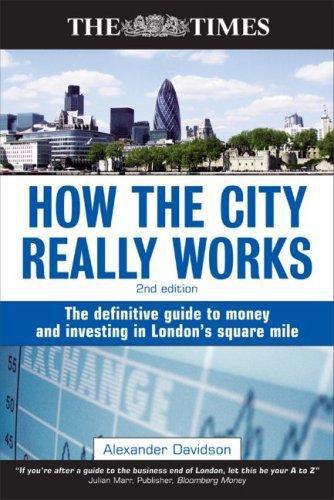
How the City Really Works: The Definitive Guide to Money and Investing in London's Square Mile
by
Alexander Davidson
Published 1 Apr 2008
The T-bill is issued in sterling at a discount to face value, and the face value is later repaid, the difference being interest equivalent. The T-bill is traded less than it was because developed countries such as the UK and United States are able to borrow for longer periods, which is cheaper based on the inverted yield curve that reflects a decline in bond yields as the maturity extends into the future. Issuance is consequently more likely in bonds than in T-bills. The euro bill is similar to the T-bill but is issued in euros. The Bank of England issues £900 million a month in three and six-month euro bills, which helps it to fund euro liabilities. ______________________________________ INTEREST RATE PRODUCTS 83 The certificate of deposit (CD) is a money market instrument distinguished by its maturity date and its fixed interest rate.
…
But the closer bonds are to maturity, the less influence this will have in comparison with the pull to par. On this basis, long-term bonds, particularly if undated, are more exposed to interest rates because redemption is further off. If you think interest rates will go down, you should buy long-term bonds. The yields are generally higher to compensate for a perceived greater risk, despite the inverted yield curve discussed earlier. A bond may often be callable, which means that the issuer, usually a company, may redeem it before maturity. If interest rates should decline, the issuer is likely to call the bond and reissue it at a lower rate of interest. The investor would then be left with money to reinvest in a world where interest rates are low.

Financial Market Meltdown: Everything You Need to Know to Understand and Survive the Global Credit Crisis
by
Kevin Mellyn
Published 30 Sep 2009
How much more depends on their specific credit rating but most critically on current market sentiment about risk in general. The effective rate that the government has to pay to borrow money for any given tenor can be plotted as a line called the ‘‘yield curve.’’ Normally, the curve should run from left to right, with rates going up with tenor. However, at times, we can have what is called an ‘‘inverted’’ yield curve, where shorter rates are higher than longer rates. This is because bond rates are set by the market, which is to say by you and me. Although you can buy government debt directly from the treasury, very few people do so. However, all institutional investors, from pension funds to banks and insurance companies are big buyers of government bonds.
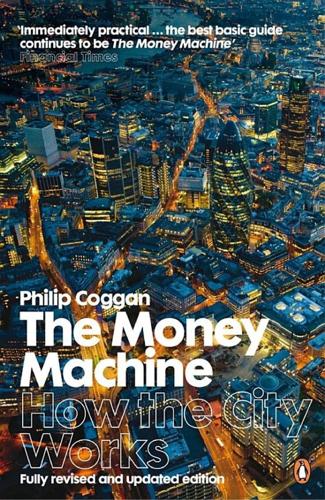
The Money Machine: How the City Works
by
Philip Coggan
Published 1 Jul 2009
Investors tend to be especially interested in buying FRNs at times when the yield curve is inverted – that is, when short-term interest rates are above long-term rates. Since the return on FRNs is linked to a short-term rate, they provide a higher income than equivalent fixed-rate bonds at such times. Booms in FRN issues have therefore taken place when high interest rates (which make borrowers want to issue FRNs) have occurred simultaneously with an inverted yield curve (which makes investors want to buy FRNs). Such conditions existed in 1970, 1974 and again in 1984–5. Typically, FRNs are linked to six-month LIBOR (the rate which banks charge other major banks for six-month loans) and are reset every six months. Most borrowers pay a margin over LIBOR that is related to their creditworthiness.
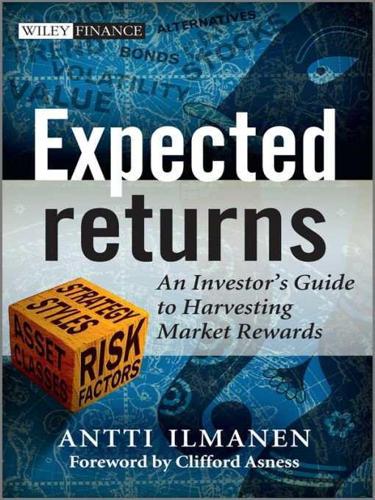
Expected Returns: An Investor's Guide to Harvesting Market Rewards
by
Antti Ilmanen
Published 4 Apr 2011
The aforementioned Hong–Yogo study argues that aggregate roll across commodities has historically been useful for market timing an aggregate commodity portfolio (general backwardation of commodity term structures predicts higher near-term returns), as have certain interest rate indicators (low short rates and an inverted yield curve both predict high near-term commodity returns). Momentum-based dynamic strategies, such as trend following, have been even more successful; I will describe them in Chapter 14. Empirically, extrapolating recent performance has been the best predictor of commodities’ near-term returns. This result may reflect irrational influences but Gorton–Hayashi–Rouwenhorst (2007) argue that profitable momentum and roll strategies may proxy for inventory effects in line with the theory of storage.
…
Using a control variable besides dividend yield in a regression can uncover such cyclical predictability (e.g., the consumption/wealth ratio or the consumption/dividends ratio). 16.4.2 Relation between yield curve shape and economic growth One series used to be an even better growth predictor than equity market return. Yield curve steepness has had an impressive ability to forecast GDP growth since World War II and inverted yield curves have been the most successful recession predictors. Many other financial series, notably credit spreads, also track business cycles but in a more contemporaneous fashion. The best explanation for the yield curve’s predictive ability is that it proxies for the Fed’s monetary policy stance: a steep (flat/inverted) curve reflects easy (tight) monetary policy.
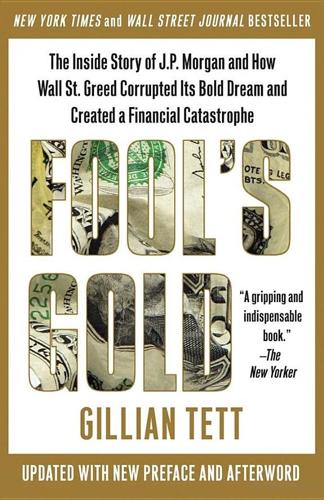
Fool's Gold: How the Bold Dream of a Small Tribe at J.P. Morgan Was Corrupted by Wall Street Greed and Unleashed a Catastrophe
by
Gillian Tett
Published 11 May 2009
The European Central Bank had belatedly followed suit. Yet these moves hadn’t worked. Instead of rising, the cost of borrowing had stubbornly continued to fall in many corners of the market. In the US government bond sphere, yields on 10-year Treasuries even tumbled below short-term bond yields, creating a bizarre pattern known as an “inverted yield curve.” Alan Greenspan dubbed the situation a “conundrum.” There were other puzzles, too. In previous decades, the price of assets had been volatile when surprises hit the markets, be they an oil price shock, a rate rise, or a swing in the housing market. However, as Basel’s BIS noted at the time, the “striking feature of financial market behavior” in the twenty-first century was “the low level of price volatility over a wide range of financial assets and markets.”
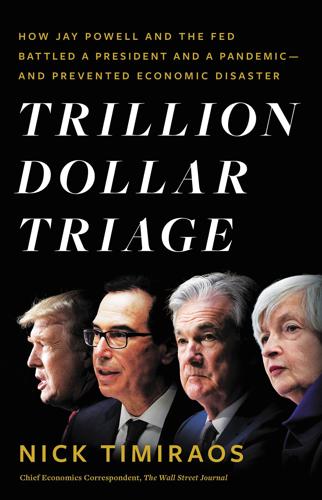
Trillion Dollar Triage: How Jay Powell and the Fed Battled a President and a Pandemic---And Prevented Economic Disaster
by
Nick Timiraos
Published 1 Mar 2022
In May 2019, yields on ten-year government notes—which tend to go down when investors become risk-averse or pessimistic about growth—slid from 2.5 percent to 2.13 percent. When the long-term yield slips below the level of three-month Treasury bills, it creates a dreaded Wall Street dynamic known as the “inversion of the yield curve.” Essentially, investors expect central bankers may need to lower short-term rates in response to a slowdown. Inverted yield curves have frequently preceded recessions by one or two years. Before an early June speech at the Federal Reserve Bank of Chicago, Powell huddled with Clarida and Williams. They agreed on adding a key phrase to his introductory remarks: Powell pledged the Fed would “act as appropriate” to sustain the expansion.
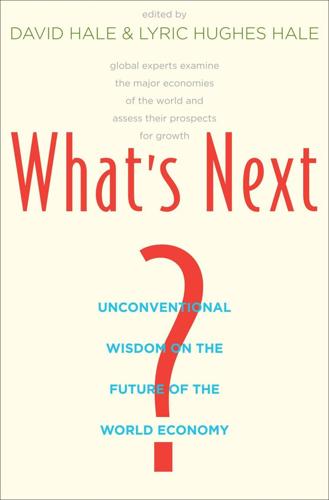
What's Next?: Unconventional Wisdom on the Future of the World Economy
by
David Hale
and
Lyric Hughes Hale
Published 23 May 2011
In Asia, we are seeing exactly the opposite, with yield curves flattening (in Malaysia, Indonesia, China, Thailand, Australia, etc.) or shifting higher (India), a divergence in trend that can only logically be explained by the differences in monetary policy. And, of course, this should logically have an impact on currency markets since steep yield curves often weaken currencies, while flat or inverted yield curves strengthen them (cash becomes harder to find, thereby inviting companies and individuals to repatriate capital from abroad, etc.). In other words, the differences in monetary policies between the East and the West should ensure that Asian currencies remain well bid. But it also means that most Asian indices face some new headwinds.
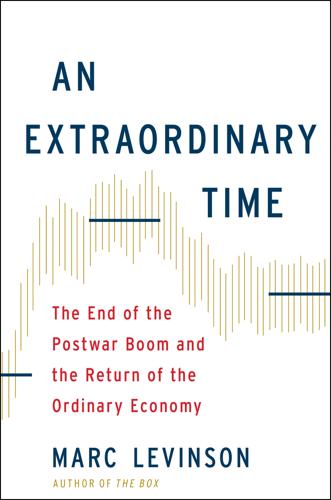
An Extraordinary Time: The End of the Postwar Boom and the Return of the Ordinary Economy
by
Marc Levinson
Published 31 Jul 2016
As the Fed began raising overnight interest rates aggressively to clamp down on inflation, interest rates on the Treasury’s short-term bonds rose close to those on its long-term bonds. On August 18, 1978, the lines crossed: investors earned more for lending to the government for two years than for ten. That unusual condition, known in the financial markets as an inverted yield curve, was an alarm bell, an unmistakable warning that a recession was likely in the second half of 1979. And then came the second oil crisis, driven by the revolution in Iran and a decision by Saudi Arabia to limit oil production. After holding steady since 1974, the average cost of a barrel of crude doubled over the course of 1979.
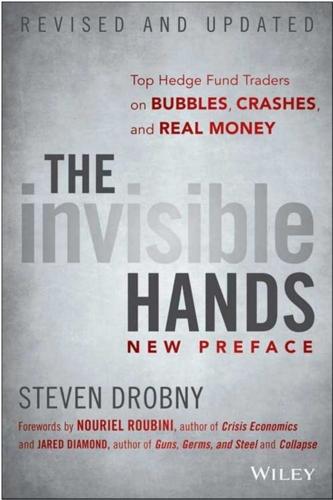
The Invisible Hands: Top Hedge Fund Traders on Bubbles, Crashes, and Real Money
by
Steven Drobny
Published 18 Mar 2010
For example, we were ahead of the game in predicting that the yield curve would invert during the Greenspan conundrum era (see box on page 276). We realized that the world had switched from one of supply constriction in commodities to one of demand pull, and that a bull market in commodities (with the associated switch from backwardation into contango in commodity futures curves) would be reflected in an inverted yield curve. In a deflationary consumer environment with an inflationary real asset environment, the real asset inflationary aspects affect the short end of the curve, but the long end remains locked down. With productivity gains and no real inflation feeding through to core CPI—because core excludes food and energy—we bought bonds on the long end and put on yield curve inversion trades, which practically everyone scoffed at.

Inside the House of Money: Top Hedge Fund Traders on Profiting in a Global Market
by
Steven Drobny
Published 31 Mar 2006
Profit targets change with more information. I have a plan that “If this happens, I’ll sit with it; if that happens, I’ll buy more,” and so on. I visualize what might happen and what would get me out, what would make me buy more, what will keep me in. What is your favorite trade at the moment? I love UK Gilts. There is a slightly inverted yield curve, and the Bank of England is the second best central bank in the world, after the Bank of Canada. They’ve taken their medicine early, jacked interest rates, and effectively killed the housing bubble, or at least they’ve taken the froth off of it. The pound is very strong on a trade-weighted basis and the United Kingdom is much more sensitive to currency movements than the United States.

Wealth and Poverty: A New Edition for the Twenty-First Century
by
George Gilder
Published 30 Apr 1981
PROLOGUE THE SECRET OF ENTERPRISE THIRTY YEARS AFTER THE publication of Wealth & Poverty, shaken by a global financial fiasco, I find myself buckling down to engage once again these central themes of human life and economics. Back during the tempestuous late years of the 1970s, with President Jimmy Carter waving limp white flags of national malaise, with hostages still held in Tehran, petroleum and gold prices shrilling doom-laden alarms, U.S. banks gasping for capital down a ferociously inverted yield curve (borrowing dear in short-term markets and lending low in long-term bonds and mortgages), with the Soviet Union battening rich on oil wealth, and John Kenneth Galbraith joining the CIA in acclaiming the robustness and fast growth of the “astonishing” Soviet economy, I declared that socialism was dead.

Crashed: How a Decade of Financial Crises Changed the World
by
Adam Tooze
Published 31 Jul 2018
See International Monetary Fund (IMF) India, 477, 483 Indonesia, 477, 483 Asian financial crisis and, 7, 32, 255–56, 261 capital controls adopted by, 475 financial crisis of 2008 and, 258–59 stimulus program, 258–59 Industrial and Commercial Bank of China, 249 inequality, 455–63 inflation, 11, 44–45 ING, 124 interest rates ECB rate increase 2011, 378–79 Fed’s rate hikes, 2015–2018, 590 Greenspan cuts, after dot-com bust and 9/11, 37–38, 55–56, 69–70 inverted yield curve, 2006, 70 taper tantrum of 2013, 472–82 Volcker’s raising of, 43–44 intergovernmentalism, 113, 114–15 International Monetary Fund (IMF), 17–18, 89, 127 acceptance of exchange controls, 475 Asian financial crisis, 261 banking crisis, 206, 401-2 Eastern European crisis, 127, 230–32, 235, 237, 491–93 eurozone crisis, 2010–12, Greece and, 323, 325, 332–34, 336, 340, 343, 344–45, 357, 377, 382–85, 388–89, 405, 413, 422, 424 eurozone crisis, 2015, Greece and 516–517, 520, 523, 527, 528–30 eurozone crisis Ireland and, 360, 364–65, 368, 398 eurozone crisis Italy and, 410–11 fiscal multiplier underestimated by, 423, 429–30 global imbalances, 40, 370 G20 agreement for expanded funding of, 270, 272 quota reallocation, 270, 272, 469, 479, 488 Ukraine and 2013–15, 493–94, 495–98, 500–1, 507–8 warns against Brexit, 550 investment banks, 51–54 Brexit and, 550–51 compensation at, 65 crises faced by, in 1990s and early 2000s, 53–54 funding of, 52–53 growth from 1970s, 51–53 products engineered by, 52 profits made by, 64–65 See also specific investment banks Iraq War, 3, 28, 115–16 Ireland, 83–84, 167, 337, 338 bank bailouts in, 185–86, 193 debt crisis in, 322, 323, 359–66 ECB forces austerity plan on, 362–65 household wealth lost in, 156 IMF and, 360, 364–65, 368, 398 real estate boom in, 105, 106, 107, 109 Irish Times, 363 Irwin, Neil, 215–17, 350 Italy, 322, 385 austerity program adopted in, 387 Cannes G20 and, 410–12 debt of, 386–87, 389 ECB’s bond buying program, 2011, 398–99 euro entry of, 94 eurozone crisis resolution, 2012 and, 431–37 Japan, 30, 158–59 Jay Z, 40 Johnson, Boris, 548, 552 J.P.